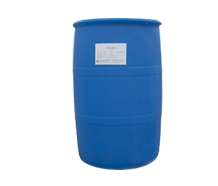Some surfactants can be used to disperse fine solid particles (especially pigments) in liquids. Surfactants attach to pigment particles by selective adsorption.
In the aqueous system, hydrophobic (lipophilic) groups are adsorbed on the surface of particles, while hydrophilic (lipophilic) groups extend into the aqueous phase. If the ionic surfactant is used, the pigment particles are separated by charge stabilization. Charge stabilization is the result of electric repulsion around particles; because all particles are surrounded by the same charge, they will repel each other when they are close to each other. In some waterborne coating systems, nonionic surfactants are also needed to provide steric stabilization around the particles.

Different from the water-based system, in the non-aqueous coating system, the oleophobic (hydrophilic) group is adsorbed on the particle surface, while the oleophobic (hydrophobic) group points to the solvent phase. In this case, the dispersion tends to be stable due to steric stabilization. Steric stabilization is due to the steric hindrance of the molecular chain of the solvated surfactant in liquid medium.
The structure of dispersant is slightly different from that of wetting agent. The dispersant must be wetted and anchored to the surface of the solid (pigment) particles, but part of it must. Forming a link between the particles and the dispersion medium. In addition, the hydrophobic part (also known as the tail) must have enough length to make the chain protruding from the pigment surface produce effective steric hindrance around the particles. In solvent based coating system, the tail length of surfactant should be more than c18h37. Surfactant with good wetting effect is not an effective dispersant because its chain length is too short.
The effective anchoring agent (anchoring agent) is adsorbed on the pigment surface, insoluble or only slightly soluble in solvent, and has strong affinity to the particle surface. Most of the anchoring agents have strong polarity and are attached to the particle surface by hydrogen bonds. Examples of anchor groups are amines. Quaternary ammonium salt, urea, carboxylic acid, sulfonate and phosphate. A few anchoring agents have specific structures, such as large flat dye molecules, which are used to anchor phthalocyanine blue and phthalocyanine green pigments. The molecular structure of these dyes is similar to that of pigments, and they tend to associate with pigments.
There is no universal wetting and dispersing agent for all pigments. However, better and more effective wetting and dispersing effects can be obtained by choosing the anchor group with proper tail and suitable for certain pigment mixture.
There are many different ways to make the molecules have both anchored mass and tail. It seems that the molecules with branched chain structure and polar groups on the branched chain have the best dispersion effect. The branch chain plays the role of anchor group, and the loop between the branch link points is the tail. A-B block (a is anchor mass, B is hydrophobic tail). A-B-A block, b-a-b block, graft or comb polymer surfactants may also be very effective pigment dispersants for non-aqueous systems.